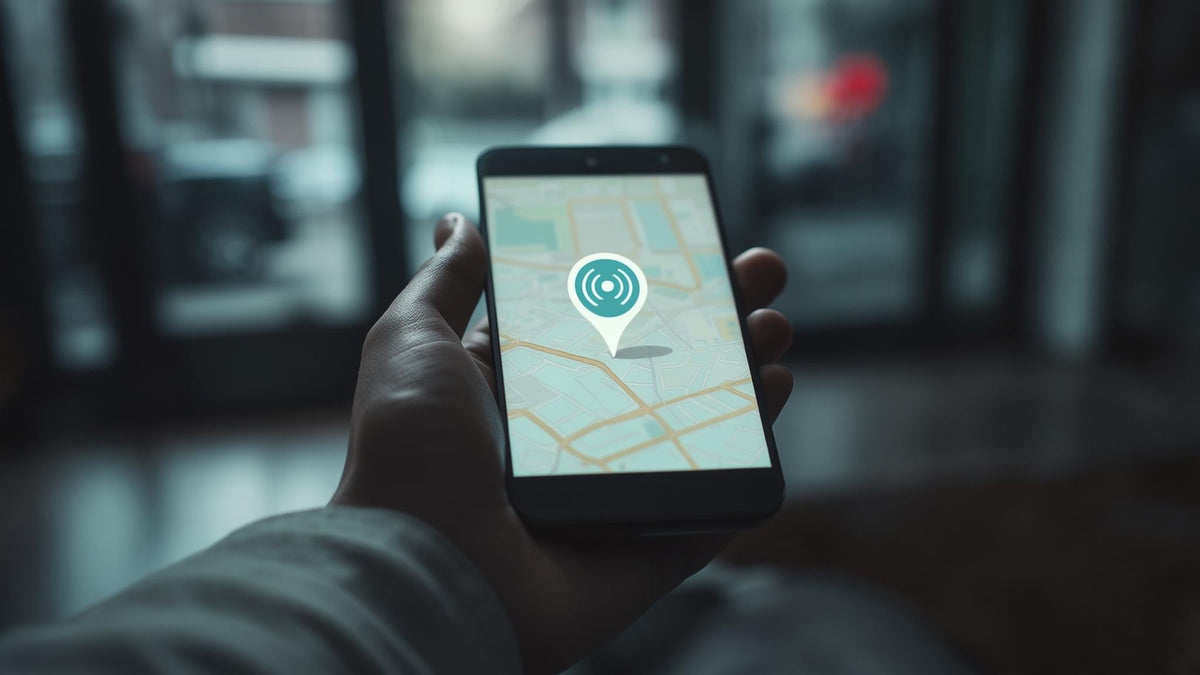My phone used to control me. Constant notifications, dead battery by 3 PM, apps I couldn't find when I needed them. Then I spent a weekend diving into Android settings and discovered my phone had superpowers I never knew existed.
I've been using Android for years, but I recently realized I was barely scratching the surface of what the settings app can actually do. After exploring every menu and option, I found features that completely transformed how I use my phone daily.
This guide walks you through everything that actually works when your phone is driving you crazy - from navigation tricks that save time to advanced options that'll make your device feel custom-built for your life. With Android 8.0 introducing a new information architecture for the Settings app to simplify organization, there's never been a better time to master these tools.
According to Android's official documentation, Android 8.0 introduced expanded search capabilities for the Settings menu and a new information architecture that makes it easier for users to quickly find settings to customize their Android devices.
Table of Contents
Finding Your Way Around Like a Pro
Essential Settings That Actually Matter
Making Your Phone Truly Yours
Advanced Tricks That Solve Real Problems
TL;DR
Multiple ways to access settings - the gear icon shortcut is fastest, voice commands work great hands-free
Smart search within settings saves tons of time versus browsing categories
Privacy and security need regular attention - apps reset permissions automatically for unused apps
Developer options unlock performance controls (tap build number 7 times to enable)
Battery optimization and storage management can dramatically improve performance
Accessibility features benefit everyone, not just users with specific needs
Try network settings reset before factory reset for connectivity issues
Finding Your Way Around Like a Pro
Getting to your settings efficiently makes a huge difference in your daily phone experience. I've discovered several access methods that work better in different situations, plus navigation features that most people completely miss.
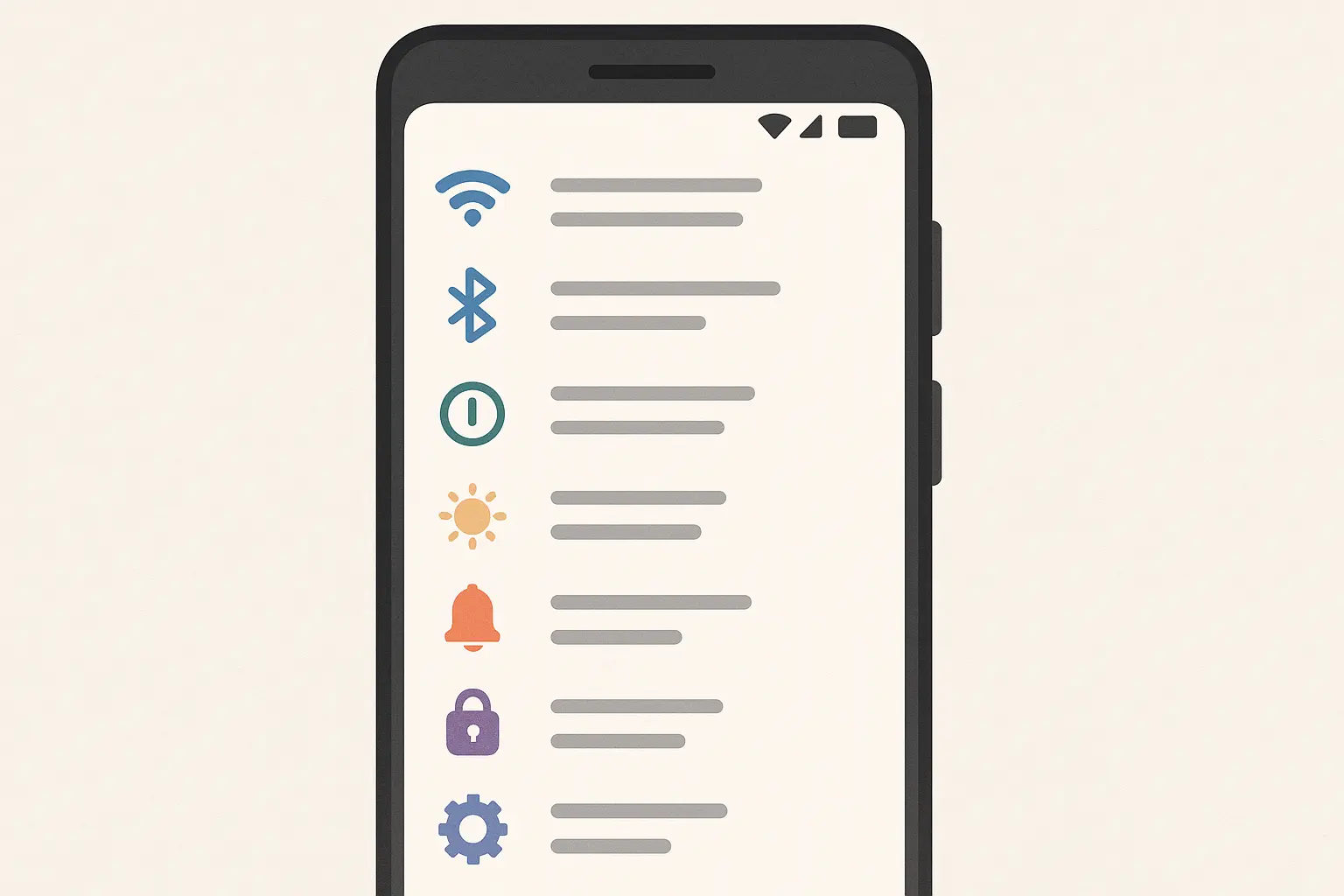
Quick Access Methods That Actually Save Time
The fastest ways to reach settings don't require hunting through apps or menus. These shortcuts have completely changed how quickly I can adjust my phone throughout the day.
Swipe-and-Tap Shortcuts You're Probably Missing
Two quick swipes down from your screen's top reveals the gear icon - tap it for instant access. Hold that same gear icon down and you'll get direct access to specific sections without navigating through the main menu.
Voice commands work surprisingly well too: "Hey Google, open settings" gets you there hands-free. Last week I was elbow-deep in cookie dough and needed to silence my phone. "Hey Google, turn on Do Not Disturb" saved me from getting flour all over my screen.
Whether you're optimizing settings or need quick access while driving, these shortcuts complement perfectly with hands-free mounting solutions.
Traditional Methods That Work Everywhere
Sometimes the old-school approach works best, especially on different Android versions or manufacturer customizations. Opening your app drawer and finding the Settings app works universally, plus you can long-press it to add a home screen shortcut.
The search method (swipe up from home and type "Settings") works great when your app drawer is cluttered. This is particularly helpful on phones where manufacturers have moved the settings app to unexpected locations.
Smart Navigation Features You've Been Ignoring
Modern Android includes sophisticated tools that adapt to how you actually use your phone. These features learn your patterns and surface relevant options automatically, but most people never notice them.
Search Functions That Actually Understand What You Want
The magnifying glass icon opens a search that's way smarter than you'd expect. Type keywords like "battery" or "wifi" and it finds related options across different categories. The system learns which settings you access frequently and starts suggesting them before you even finish typing.
Voice search works here too - just say "Hey Google" followed by your specific request. I'm amazed at how accurately it interprets casual language instead of technical terms.
Looking ahead, Android 16 may revolutionize navigation even further. According to "Android Police", Android 16 could introduce a new SettingsPreferenceService API that would let developers integrate their own app settings directly into the system's settings UI, potentially creating a unified settings hub for all your app preferences.
Recently Used and Contextual Settings
Your most recently modified settings appear at the top of the main screen, which saves tons of time when you're tweaking multiple related options. Even better, Android shows contextual settings based on what you're doing - WiFi options pop up when you're connecting to new networks, and relevant controls appear in your notification panel when they're actually useful.
This contextual awareness has become one of my favorite Android features because it eliminates the guesswork about where to find specific adjustments.
Essential Settings That Actually Matter
Your phone's performance issues usually aren't hardware problems - they're configuration problems. I used to think my two-year-old phone was dying when apps started crashing and battery life tanked. Turns out, I just needed to clean house.
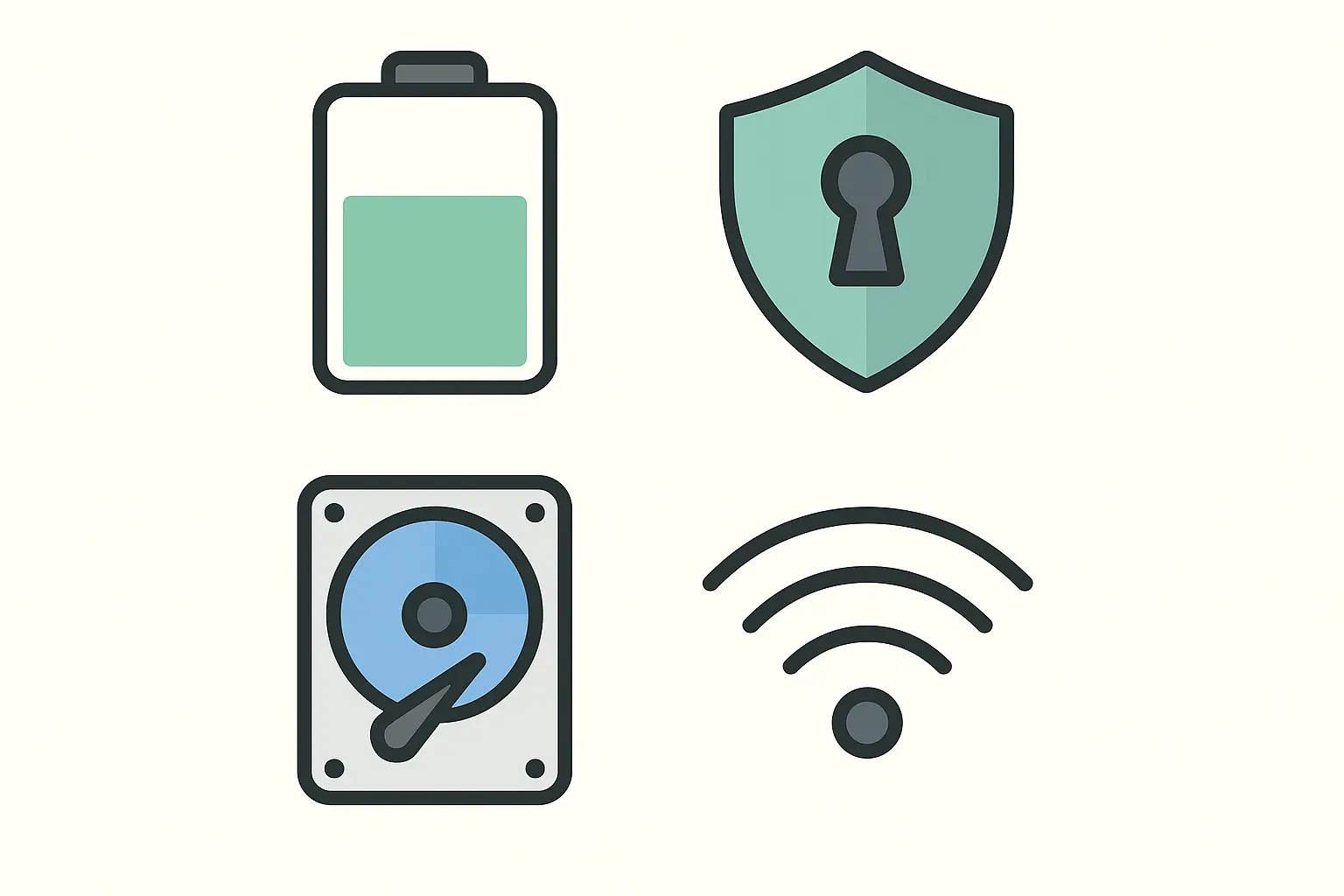
Storage Management That Actually Works
Forget just deleting photos. Go to Settings → Storage and you'll see the real culprits eating your space. That "Other" category that's somehow 8GB? It's mostly app cache files that serve zero purpose after accumulating for months.
Smart Storage is a lifesaver here - it automatically backs up photos to Google Photos then removes them from your phone. I was skeptical until I realized I never actually look at photos stored locally anyway.
Storage Category |
Typical Usage |
Management Strategy |
|---|---|---|
Apps |
15-25GB |
Uninstall unused apps, clear cache monthly |
Photos/Videos |
20-40GB |
Enable cloud backup, use Smart Storage |
System |
8-12GB |
Cannot be modified, but updates may optimize |
Downloads |
2-5GB |
Review and delete old files quarterly |
Other Files |
3-8GB |
Use Files app to identify and remove large files |
Quick storage wins:
Clear cache monthly (not daily - that's overkill)
Uninstall apps you haven't opened in 3 months
Download folders are digital junkyards - clean them out
Battery Settings That Stop the Drain
Adaptive Battery (Settings → Battery) learns which apps you actually use versus the ones just sitting there sucking power. It's like having a bouncer for your battery.
The real game-changer is app-specific battery restrictions. That meditation app requesting location 24/7? Yeah, it doesn't need that. Set it to "Restricted" and watch your battery life improve.
According to AirDroid's analysis, Digital Wellbeing only keeps up to 10 days of usage data on your device storage, with accessible history lasting only 24 hours before removal, making regular battery monitoring crucial for identifying usage patterns.
For users who rely on their phones throughout long workdays, understanding these battery optimization settings becomes even more crucial when paired with efficient wireless charging solutions that maintain optimal battery health.
System Updates and Security Patches
Settings → System → System Update checks for major Android updates, but security patches come separately and usually monthly. I've set mine to download and install automatically during specific hours when I'm not using my phone heavily.
The automatic update setting has saved me from forgetting about important security patches, which used to be a constant worry.
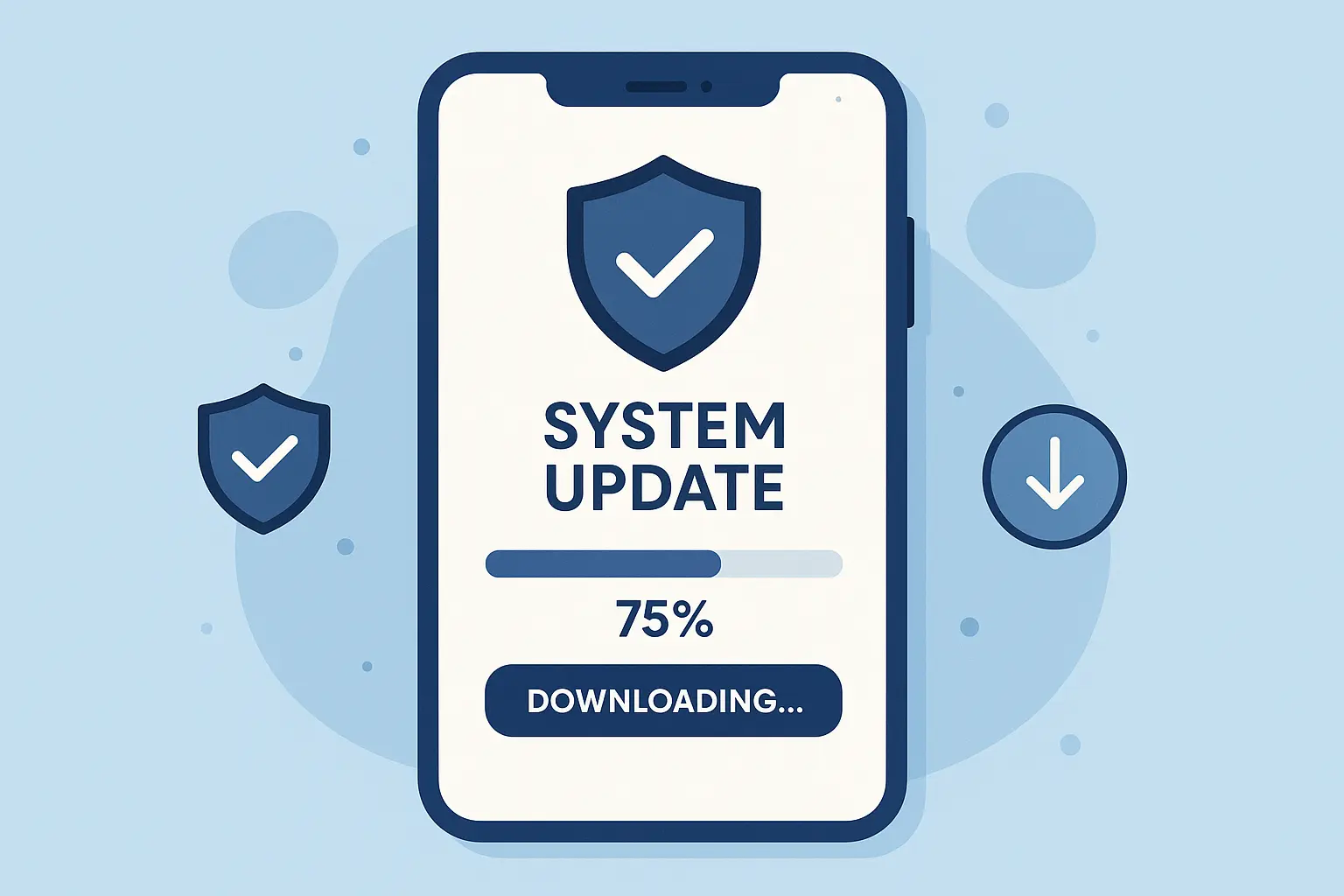
Privacy Settings You Can't Ignore
Apps request permissions like they're collecting trading cards. Camera, microphone, location, contacts - they want it all.
Go to Settings → Privacy → Permission Manager and you'll see which apps have access to what. That flashlight app doesn't need your contacts. The weather app doesn't need your microphone. Start saying no.
App Permissions That Protect Your Personal Information
Permission Manager shows every type of permission (camera, microphone, location, etc.) and which apps have access. You can grant or deny permissions as apps request them, and Android automatically revokes permissions for apps you haven't used recently.
Consider a photo editing app that requests location access. While this might seem unnecessary, the app could use location data to organize photos by where they were taken. However, you can deny location access and still use all the editing features - the app will simply work without the location-based organization feature.
Security experts emphasize the importance of these controls. As highlighted in "9to5Google's security guide", many Android security features like Find My Device and Theft Protection aren't enabled by default, requiring users to manually activate these crucial protections.
Location Controls That Balance Privacy and Functionality
Location settings let you choose between precise and approximate location sharing for each app individually. Location History controls whether Google tracks and stores your movements over time, while Emergency Location ensures your location gets shared during emergency calls regardless of your other privacy settings.
Most apps work fine with approximate location only, which provides enough functionality for weather and local search without giving away your exact position constantly.

Biometric Security That's Actually Convenient
Fingerprint setup (Settings → Security → Fingerprint) works reliably on most modern Android devices, and face unlock provides a backup option. Smart Lock automatically unlocks your phone in trusted locations or when connected to trusted devices like your car's Bluetooth.
Smart Lock has been a game-changer - my phone stays locked everywhere except at home and in my car, where I don't need the extra security friction.
Connectivity That Actually Connects
Network and communication settings determine how well your phone connects to WiFi, cellular networks, and other devices. Getting these configured properly prevents connection issues and optimizes data usage.
WiFi Preferences That Improve Connection Quality
Advanced WiFi settings control auto-connect behavior, network notifications, and frequency preferences that can improve connection stability. Data usage controls let you set monthly limits and warnings for mobile data, preventing overage charges.
WiFi Setting |
Purpose |
Recommended Configuration |
|---|---|---|
Auto-Connect |
Automatically joins known networks |
Enable for trusted networks only |
Network Notifications |
Alerts for available networks |
Disable to reduce distractions |
Frequency Band |
2.4GHz vs 5GHz preference |
Auto (let system choose) |
Randomized MAC |
Privacy protection |
Enable for public networks |
WiFi Calling |
Voice calls over WiFi |
Enable for better indoor coverage |
These WiFi settings have dramatically improved my connection reliability, especially in areas with spotty cellular coverage.
Bluetooth Management for Seamless Device Pairing
Settings → Connected Devices → Bluetooth handles pairing new devices, but advanced codec preferences can dramatically improve audio quality with compatible headphones and speakers. Each paired device gets individual controls, so you can customize behavior for your car, headphones, and other Bluetooth accessories separately.
For motorcycle enthusiasts who rely on Bluetooth connectivity for navigation and communication, these Bluetooth settings work seamlessly with premium Bluetooth motorcycle helmets to ensure crystal-clear audio during rides.
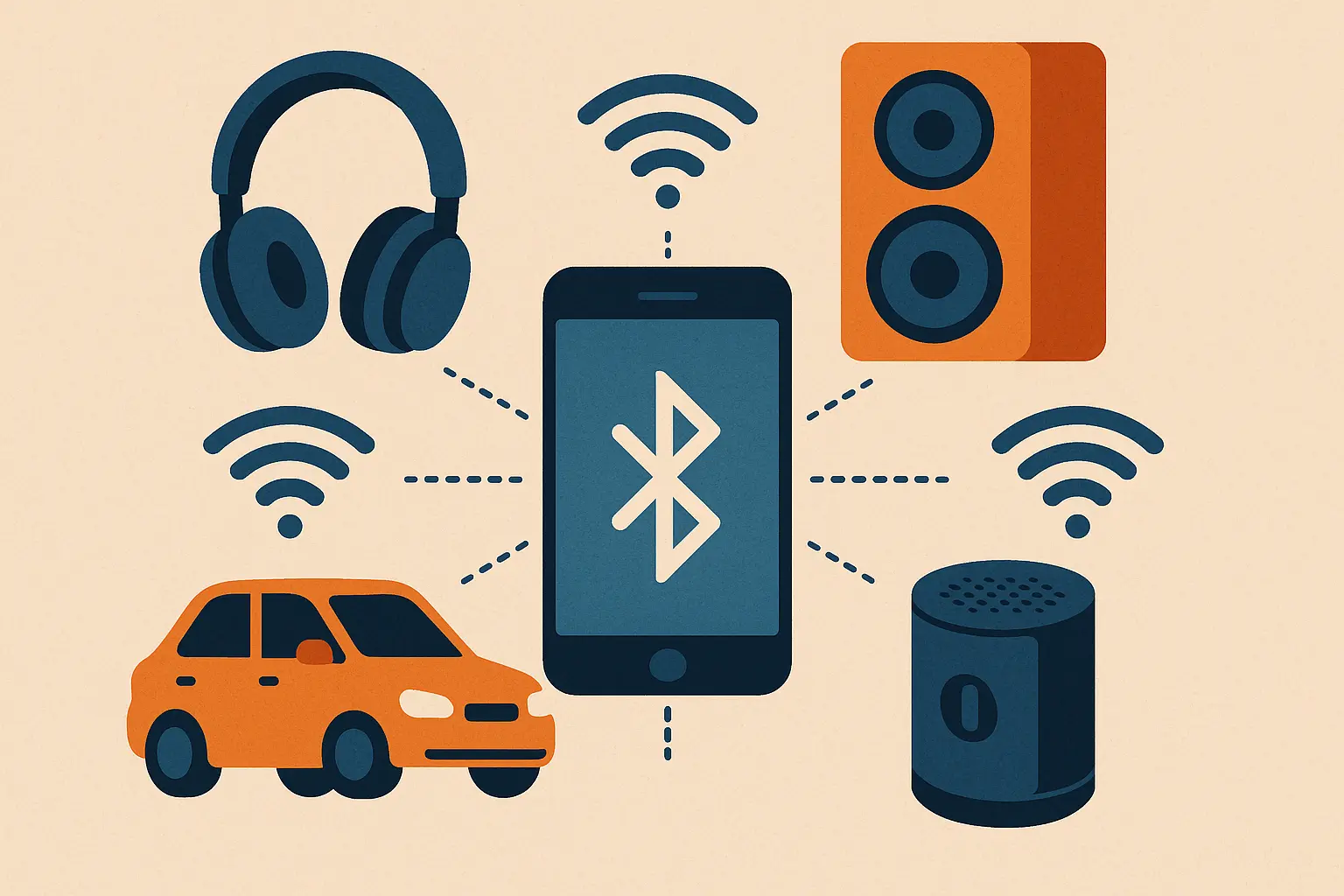
Making Your Phone Truly Yours
Stock Android is like a beige rental car - functional but soulless. Here's how to make it feel like yours without installing sketchy launchers or voiding warranties.
Visual Tweaks That Matter
Display and interface modifications let you create a phone experience that feels uniquely yours while also improving usability. These aren't just cosmetic changes - the right visual settings can reduce eye strain and make your phone more efficient to use.
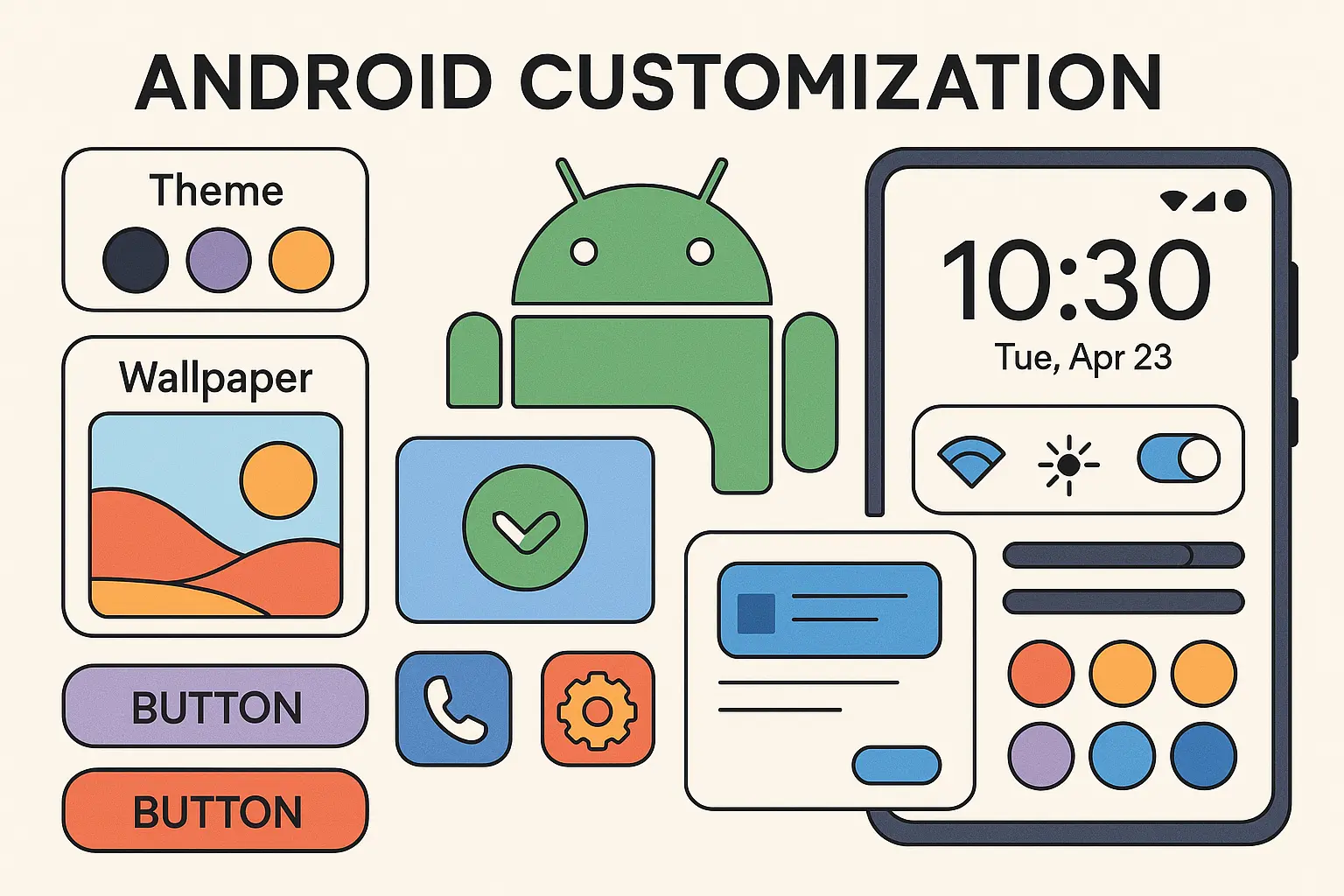
Theme and Appearance Options That Go Beyond Dark Mode
Dark mode (Settings → Display → Dark Theme) isn't just trendy - it saves battery on OLED screens and reduces eye strain during late-night scrolling sessions. But Material You theming is where things get interesting. Change your wallpaper and watch your entire interface adapt its colors automatically.
Font size adjustments aren't just for older users. Bumping up text size by one level makes everything more readable without looking childish.
Home Screen Organization for Maximum Efficiency
Default launcher settings (Settings → Apps → Default Apps → Home App) let you completely change your home screen experience if you don't like your manufacturer's approach. Some Android versions offer different icon shapes and grid sizes.
I switched from a 4x5 app grid to a 5x6 grid on my home screen, which allowed me to fit 30 apps instead of 20. This eliminated the need to swipe between multiple home screen pages for my most-used apps.
Notification Control That Preserves Sanity
Your phone buzzing every 30 seconds isn't productivity - it's torture. Settings → Notifications → App Notifications lets you get surgical about what interrupts your day.
I keep texts and calls unrestricted but everything else gets the silent treatment. Instagram likes can wait. So can LinkedIn connection requests.
Do Not Disturb scheduling creates automatic quiet hours with exception rules for important contacts or apps. Mine kicks in automatically during work meetings and sleep hours, with exceptions only for family members and actual emergencies.
Accessibility Features Everyone Should Use
Accessibility settings aren't just for users with specific needs - many of these features improve the phone experience for everyone. Several accessibility options make common tasks easier and more comfortable.
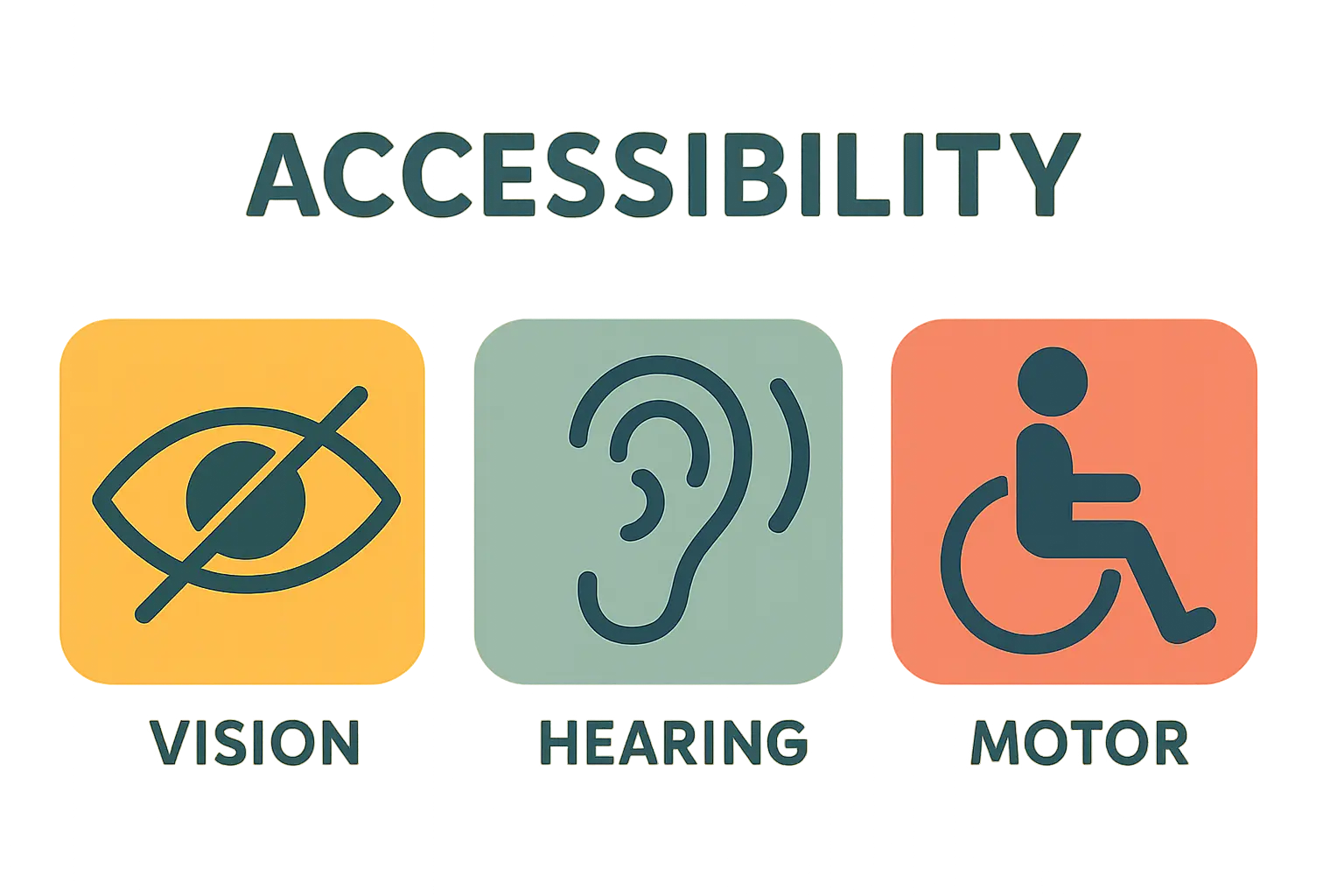
Visual and Motor Accessibility Improvements
TalkBack provides screen reading for users with visual impairments, while magnification features (triple-tap to zoom) help anyone who needs to see small details more clearly. This is perfect for tiny text and QR codes.
High contrast text makes everything more readable in bright sunlight, making your phone more usable in various environments.
Audio and Communication Enhancements
Live Caption creates real-time subtitles for any audio playing on your device. It's perfect for watching videos in noisy coffee shops or when you forgot headphones.
Sound Amplifier enhances audio through headphones for better clarity, and RTT calling provides real-time text during phone calls, which can be helpful even if you don't have hearing difficulties.
Live Caption has become indispensable when watching videos in public spaces or trying to follow along with audio content in noisy environments.
Advanced Tricks That Solve Real Problems
These deeper-level configurations and diagnostic tools help you squeeze maximum performance from your Android device and resolve issues that basic troubleshooting can't fix.
According to digital wellness research, Android's Digital Wellbeing feature shows detailed information about phone usage including total hours spent, apps opened, notifications received, and device unlock frequency, providing valuable insights for performance optimization.
Developer Options Unleashed
Developer options contain settings originally designed for app developers, but many of these controls are incredibly useful for regular users who want maximum control over their device's behavior.
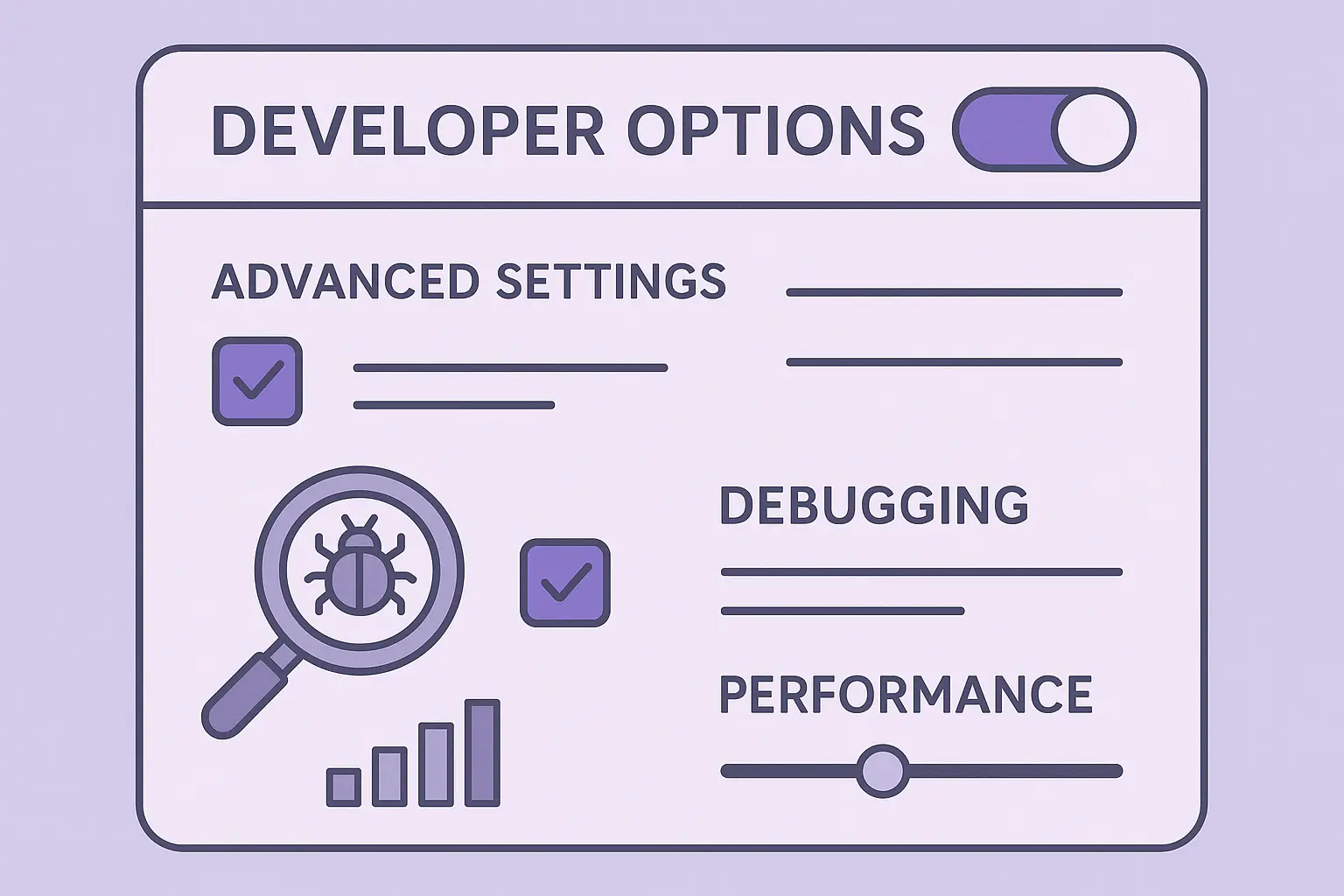
Enabling and Using Advanced System Controls
Tap "Build Number" seven times in Settings → About Phone, then enter your PIN or password to unlock Developer Options. Congratulations, you're now a developer (sort of).
Animation scales control how fast your interface moves. Set them all to 0.5x and your phone will feel twice as fast. Set them to 0 (off) and it'll feel instant, though some people find this jarring.
USB debugging enables advanced connection options for troubleshooting and file management that aren't available through normal settings.
For professionals who need reliable phone performance in demanding environments, these developer settings complement perfectly with military-grade protective cases that keep devices secure during intensive use.
Performance Monitoring Tools That Identify Problems
Running services shows which apps and system processes are consuming resources in real-time, helping you identify battery drains or performance issues. Memory usage monitoring displays RAM consumption patterns, and GPU rendering tools provide visual indicators of performance bottlenecks in apps and games.
These monitoring tools have helped me identify several apps that were consuming excessive resources in the background, leading to noticeable improvements in battery life and overall performance.
System Maintenance and Recovery Options
Regular maintenance prevents many common Android problems, while recovery options provide solutions when issues do arise. Proactive maintenance is much more effective than reactive troubleshooting, and knowing your recovery options can save you from losing data or needing professional help.
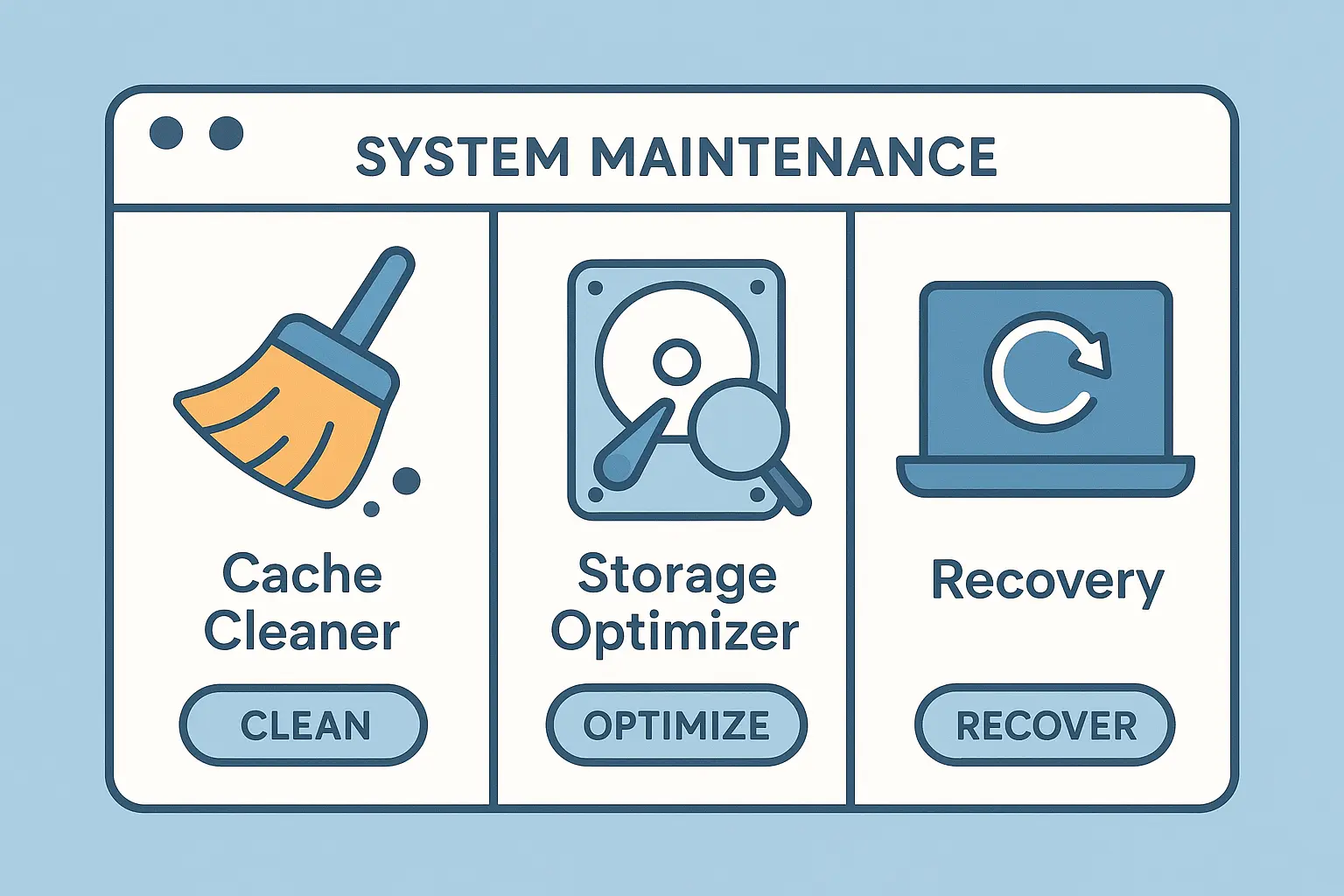
Cache and Data Management for Optimal Performance
System-wide cache clearing (Settings → Storage → Cached Data) removes temporary files that accumulate over time and can slow down your device. App-specific cache and data clearing (Settings → Apps → Select App → Storage) resolves issues with individual apps without affecting others. Some Android versions offer automatic maintenance scheduling during low-usage periods.
Monthly maintenance checklist:
Clear system cache
Check storage usage and clean up files
Review battery-draining apps
Update security patches when available
Restart device weekly for optimal performance
Review app permissions quarterly
Back up important data regularly
Check for app updates in Play Store
Following this maintenance routine has eliminated most of the random slowdowns and glitches I used to experience regularly.
Reset Options When Nothing Else Works
Network settings reset (Settings → System → Reset → Network Settings Reset) fixes 90% of connectivity issues without nuking your entire phone. It clears WiFi passwords and Bluetooth pairings but leaves everything else alone.
Factory reset is the nuclear option - only use it when nothing else works and you've backed everything up first, as this completely wipes your device and returns it to original settings.
Before performing any major reset, consider how reliable car phone mounts can help you maintain access to navigation and emergency contacts during the reset and recovery process.
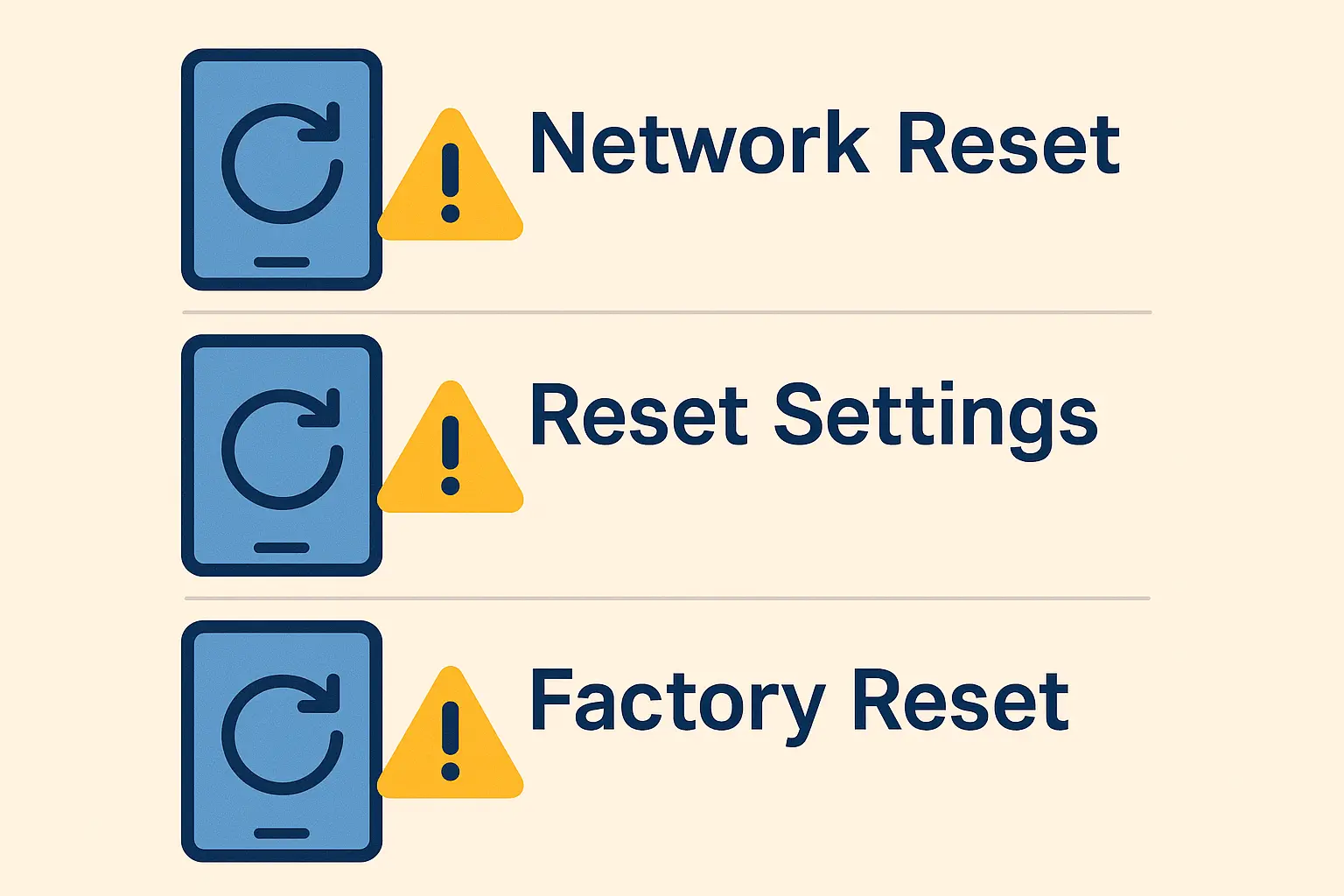
Network settings reset has solved connectivity problems for me multiple times without requiring the nuclear option of a full factory reset.
The Bottom Line
Your Android phone has more customization options than most people use in a lifetime. The settings app isn't just for fixing problems - it's for preventing them and making your phone work exactly how you want it to.
Mastering these settings transforms your phone from a basic communication device into a personalized, optimized tool that works exactly how you need it to. The time you invest in understanding these options pays dividends in improved performance, better security, and a more enjoyable daily experience.
Spend an hour going through these settings and you'll have a phone that feels custom-built for your life instead of fighting against it. Regular maintenance and periodic reviews keep your device running smoothly and adapt to your changing needs over time.
Your Android settings contain far more power and flexibility than most people realize. Taking advantage of smart navigation features, properly configuring privacy and security options, and customizing your interface creates a phone experience that's uniquely yours while maintaining optimal performance.
When you're ready to take your Android experience to the next level, consider pairing your optimized settings with premium protection. Rokform's rugged cases and mounting systems complement your carefully configured device perfectly - their military-grade protection keeps your phone safe while their innovative mounting solutions work seamlessly with your GPS, charging, and connectivity settings.
Whether you need hands-free navigation, secure mounting for outdoor activities, or wireless charging integration, Rokform's solutions enhance the Android experience you've worked to optimize.
For those who've mastered their Android settings and want to take mobile productivity further, explore how magnetic car phone mounts can seamlessly integrate with your optimized device configuration for the ultimate hands-free experience.
Ready to protect your perfectly configured Android device? Explore Rokform's complete lineup of cases and accessories designed specifically for your phone model.








